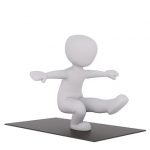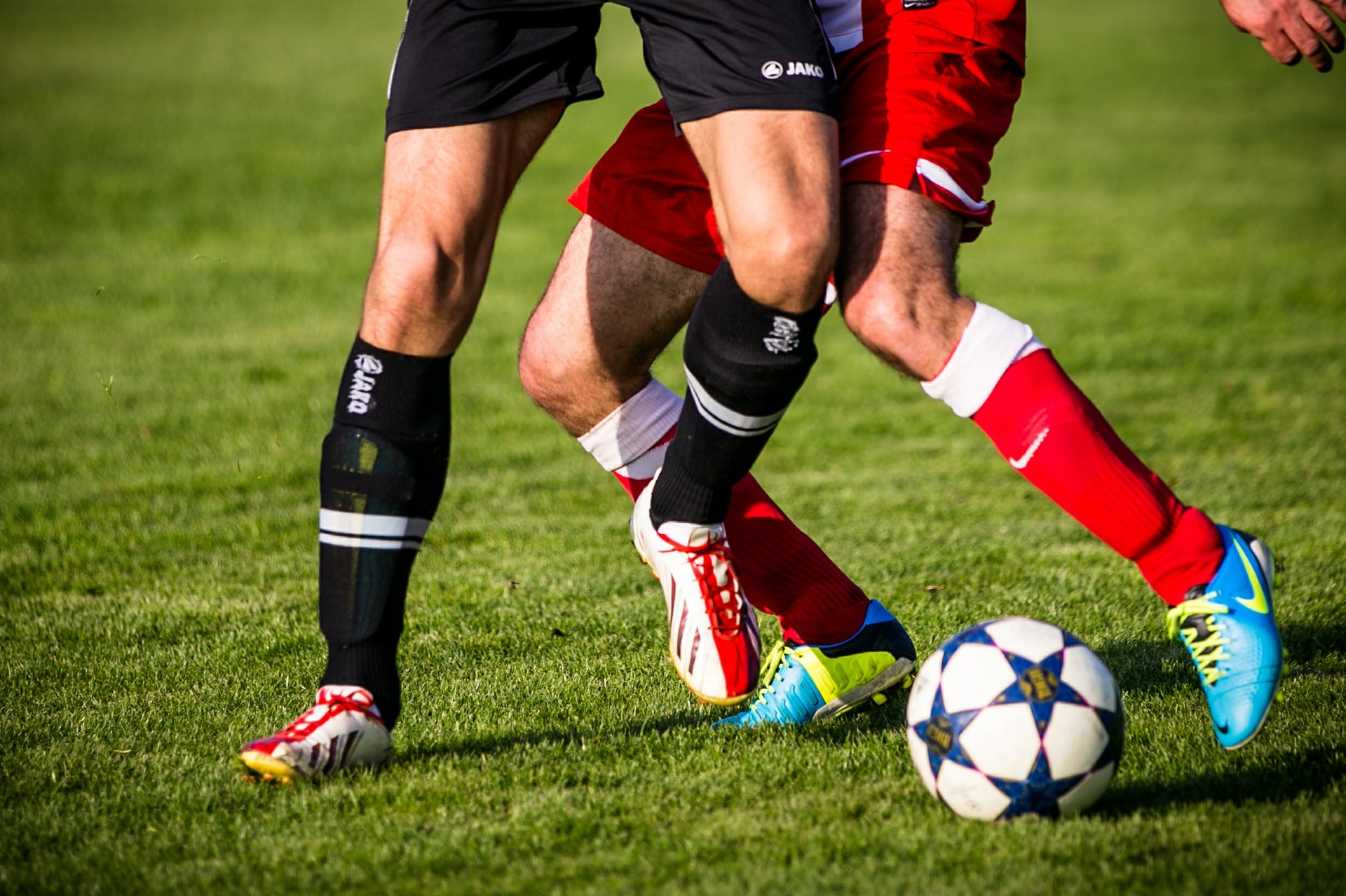Physical activity and MND – part 1
Every month the Research Information team looks at ‘the stats’ for the MND Research blog. These show us how many times each of our blogs are looked at and, every month, ‘Physical activity and MND – is there a link?’ features in the top five. This is possibly driven by media stories of professional sportspeople who have been diagnosed with MND. As we receive a lot of emails about this subject, we felt it was about time for an update as ‘the stats’ suggest this is a topic close to people’s hearts.
This is the first of three blog articles looking at MND and physical activity and other factors that may, or may not, play a role in the development of the disease.

As this blog was being written, a paper, by Visser and colleagues, was published in the Journal of Neurology, Neuroscience and Psychiatry, which investigated the association between physical activity and MND in a large multi-centre study. You can read our blog article about the paper here.
In summary, the authors believe they have shown a significant positive relationship between physical activity and likelihood of developing MND. The study concludes there is a 6% increase in risk of developing MND to people with high activity levels.
To put this into some perspective, this is a 6% increase in risk of something that conveys only a very low risk to begin with. The authors themselves state that this is not a major factor in the development of MND and the benefits of exercise with regard to other life-threatening conditions, such as cardiovascular disease, far outweigh the risk of developing MND by physical activity.
Back to the blog
The enquiries we receive about physical exercise tend to fall into two categories:
1) Did the amount of physical activity I undertook before my diagnosis cause my MND?
2) Can I continue with physical activity after my diagnosis, or will this make my MND worse?
Physical activity ranges from gentle exercise (like walking) to more vigorous daily activity (like working out at a gym), to the levels achieved by professional sportspeople and elite athletes.
This article is going to try to answer the first question.
A brief overview of available evidence
In 2013 we reported on the results from a study, carried out by a team from the University of Sheffield, which identified that higher levels of physical activity appeared to be a definite risk factor for the non-inherited form of MND (known as ‘sporadic’ MND). As most people who are physically active do not develop the disease, it was suggested that the observed increased risk is probably due to a subtle combination of several environmental/lifestyle factors, of which physical activity is one, rather than physical activity alone.
In 2014, one study found that overall physical activity was associated with a reduced likelihood of developing MND, and even suggested that physical activity may be protective against the disease. They cited several other, older, studies that supported the notion that physical activity is not a risk factor for MND.
A 2016 study concluded that increased physical activity was associated with a reduced risk of dying from MND for most people. However, they also suggested an increased risk of MND in certain sub-groups: individuals who are obese, or who have a high BMI due to substantial increase in muscle mass may be at greater risk from vigorous physical activity. The researchers suggest that further investigations may confirm this is due to ingestion of performance enhancing drugs to increase muscle mass or compounds that promote weight loss.
Another study in 2016 studied exposure to environmental factors in 92 people with MND. They looked for an association between physical activity and drug intake, head trauma and participation in specific sports (football, ice hockey) and age at symptom onset. No relationship between vigorous physical activity and age at symptom onset was seen. In former football and ice hockey players, the rate of vigorous activity was higher but frequency of head injuries and analgesic (pain killer) intake were not different compared to other people living with MND. History of head injuries was the only environmental risk factor associated with accelerated neurodegeneration in MND as well as other neurodegenerative diseases such as Alzheimer’s and Parkinson’s disease.
These studies support the suggestion made by the Sheffield researchers in 2013 that it is not increased physical activity per se, but other unknown environmental factors that increase MND susceptibility. However, in the light of the research recently published by Visser this is now called into question. Although it remains unlikely that vigorous physical activity by itself causes MND, and it is more probable that a combination of environmental factors associated with physical activity contribute to the development of the disease, no obvious causative factors emerged from the Visser study.
However in a 2016 study, again carried out by researchers at Sheffield, which asked 175 individuals newly diagnosed with sporadic MND and 317 matched controls, about energy expenditure and time spent in vigorous-intensity physical activity, found that participation in exercise, equivalent to approximately 45 minutes brisk walking a day, was consistently associated with an increased risk of developing MND.
So what does this mean?
The stories about MND and physical activity that make it into the media feature prominent sports people who have been very active for a number of years. While this is good for raising awareness of the disease, it also raises concerns for people living with MND.
To add more fuel to the fire, in 2010 McKee and colleagues suggested that a newly defined neurodegenerative disease – chronic traumatic encephalopathy – often resulting from repeated head injuries could be the underlying reason for MND cases observed among professional athletes and perhaps also among military veterans.
These studies continue to pose the question: ‘Does physical activity cause MND?’ The honest answer to that is ‘we still don’t know for sure’. If you were very active before diagnosis the conveyed risk is still very, very small. And let’s not forget that there is still plenty of evidence to support the suggestion that it isn’t the amount of physical activity per se but some other, as yet unknown, environmental factor that increases the risk of developing MND.
Remember!
According to the World Health Organisation (WHO), insufficient physical activity is one of the leading risk factors for global mortality and is on the rise in many countries. People who are insufficiently active have a 20-30% increased risk of death compared to people who are sufficiently active. The WHO recommendations for activity levels can be found here. Therefore, a sedentary lifestyle is not recommended as the benefits of any exercise undertaken before diagnosis far outweigh the possible risks that physical activity contributed to the development of the disease. Continuing exercise, albeit in a limited format, is also important once a diagnosis of MND has been made and this will be discussed in part two of this trio of physical activity related blogs.







Thanks for this brief summary of some of the research findings in relation to this topic. It certainly is a topic frequently raised by people with MND and is therefore of concern and interest.
Hi
Thank you for your comment. This is the first of three blog articles that are addressing different aspects of physical activity and MND as this is a subject we get asked about on a regular basis. I’m glad you found this one of interest, the two remaining articles will be published over the next couple of weeks.
Kind regards
Mandy
I was very active before being diagnosed in 2017. Swimming, cycling, jogging, walking, gym and skating.
Now the MND is progressing Can’t walk and neck is bad beginning to get out of breath.
Hi
Thank you for your comment, I am sorry to hear of your diagnosis. As we’ve discussed in this blog, it is very unclear how much influence the amount of physical activity undertaken before diagnosis may have contributed to the development of the disease, and is likely caused by a subtle combination of genetics, lifestyle and environment.
With regard to the problems you are beginning to experience with your neck, are you aware of the HeadUp Collar? The collar was developed to make it easier for patients to carry out everyday tasks such as eating, driving and communication. It can be customised to provide support where it is needed most and to adapt to the changing needs of the patient. The good news is it is available through the NHS. You can find out more about it on the manufacturer’s website.
Kind regards
Mandy
Mandy, I have looked into the TalarMade Head Up Collar and will probably purchase as I have not found anything like it locally. There are very few options for ALS patients who need neck support. It is £150.00, Carriage – £68.67, about $ 290.00 US. Filing a VAT Exemption certificate gets MND patients a discount. You mentioned availability through the NHS, could I use insurance that route?
Firstly my sincere apologies for the delay in replying to your comment. If you are not resident in the UK you would not be able to get the collar through the NHS.
Regards, Mandy
My humble opinion is there could be a relationship between overheating the body while excercising or inadequate fluid intake this could help explain the small number of people who exercise who are effected by MND. I have read articles in regard to overheating mitochondria and the temperatures they can reach. I myself was a squash player and found myself dehydrated and assume overheated on numerous occasions over the years I played. Maybe just grasping at straws but this could be a similar situation to head injuries and another environmental situation related to intensive excersise that only some people experience.
Hi
Thank you for your comment. There is continuing research into this subject and it may be that, one day, this is one of the risks identified as contributing to the development of MND. Another blog will be published in a couple of weeks that looks at other possible causes associated with physical activity, including oxidative stress. You may find this of interest.
Kind regards
Mandy
Hi I’m recently diagnosed with MND Possibly PLS variant. I’m 56, but have always exercised quite intensely for over 35 years, running, weights, rowing more recently Thai Boxing. However, most of this has stopped due to significant weakness in the left arm. I’m intrigued by the potential link with exercise & MND, so will follow carefully. I still run & can just about paddleboard.
In addition I’ve had a high stress career, the exercise helping to retain a sense of stability, but maybe the two extremes of stress may have triggered an inherent susceptibility to MND?
James
Hi James,
While there have been a few studies investigating the association between exercise and MND (and, as you can see from the article, only a small increase of risk is usually observed), we do not know the exact process of why this happens. It could be that there is a specific genetic variation that predisposes a person to both athleticism as well as an increased risk of developing MND, but it also could be that it is the factors closely associated with physical activity that drive this relationship; people who exercise more strenuously have greater energy expenditure, and so they can be more prone to oxidative stress (as there is greater build up of toxins).
There are lots of hypotheses as to what could drive the physical activity-MND relationship, but unfortunately, they are all speculative for now. The next two blogs will focus on physical activity after diagnosis of MND and the possible reasons why physical activity may be associated with increased risk of developing the disease.
Best Wishes,
Martina
Dear Martina-thank you for the additional information. I am most interested in physical activity post diagnosis, as I’m never quite sure if it could worsen the existing symptoms such as weak forearm & grip.
Look forward to reading the next issue that deals with these matters.
James
Hi James,
In short – it is recommended to do some light/moderate exercises after diagnosis to keep function and good movement in the muscles for as long as possible. You can read more in our Information sheet on physiotherapy: www.mndassociation.org/wp-content/uploads/2015/06/06a-physiotherapy.pdf. It is always best to speak to a clinician about an exercise programme as they can help find an activity that is best suited to each individual.
Best Wishes,
Martina
Has there been any positive improvements or relief with MND by using Oxygen Therapy? James A
Hi James
Thank you for your comment. ALS Untangled, a panel of experts who critically review the evidence for alternative and off-label treatments, looked at Hyperbaric Oxygen Therapy (HBOT) in 2016. They concluded that there are plausible mechanisms by which HBOT could work in MND and that a study, albeit flawed, showed benefit in a mouse model, the best available human trial of HBOT showed no benefit. HBOT also has potentially serious complications and therefore they do not recommend this treatment for people with MND at this time.
Kind regards
Mandy
Thanks for this activity issue, in my youth played rugby twice a week until 35yrs old also played Waterpolo and squash as teenager had three boxing fights but stopped everything when 50yrs. After just did lot of dog walking and couple swims a week to keep me fit. Formally diagnosed ALS MND two weeks after 65yrs old in May 2014 I had pain in left hip and assumed to long in the front row playing rugby.
Thank you John for your experiences. Sorry to hear you have ALS variant. Are you still fairly active now or has the MND progressed since 2014 to a high degree.
James
I am 71, my MND ALS was diagnosed 2 years ago. I was never a natural athlete, but through my adult life i jogged, did hill walking and played squash. When you jog or walk up a hill, if you feel tired, you slow down or stop. However when playing squash, if you feel tired, and the ball is almost within reach, you go for it. This is more stressfull on the body. Could allowing for this in studies make a difference?
Hi Richard
Thank you for taking the time to comment on our blog.
This is an interesting point but, based on the research, it is unlikely that pushing yourself a little bit more in some activities will cause significantly more stress on the body to the point where it contributes to MND.
Researchers who have studied possible links between exercise and MND will have taken into account the level of activity required for different sports and based their conclusions on this.
Regards
Mandy
January 28, 2016 I was diagnosed with “probable” limb ALS. Before ALS robbed me of the use of my hands, arms and legs, I was fairly active. I loved walking, biking, hiking, swimming and had even started running, finally hitting the two mile mark on my 50th birthday. I had double carpal tunnel surgery in December, 2014. Noticeable MND symptoms started less than two months later. Doctors at Froedtert ALS Clinic in Milwaukee have said it may not have been carpal tunnel, but early signs of ALS, that I was misdiagnosed. I swear going under anesthesia twice in ten days set off a catastrophic progression of this horrible disease. I continued staying active with physical and occupational therapy, water yoga and daily workouts at home with weights and a stationary recumbent bike I bought to replace my treadmill. I can no longer do any of those things, but continue doing aqua therapy 2x a week with a personal trainer. Not sure any of this has slowed the progression, but letting the disease render me sedentary didn’t seem like an option for me.
I’m thinking of trying FIR Sauna, has anyone tried this with MND? Are there any downsides?
Thanks, James
Hi James
Thank you for your question. A far infrared (FIR) sauna uses light to create heat. Unlike a traditional Finnish sauna, in which heat is used to warm the air, a FIR sauna uses infrared light waves in a low humidity environment. These are reported to penetrate deep inside the body, promoting better blood flow and improving general feelings of well-being.
I have had a look and can’t find any scientific evidence to support the use of FIR saunas by people with MND, nor can I find anything that says they can’t be used. As I am not a medical professional, it may be worth seeking the guidance of a doctor before undertaking this treatment.
Kind regards
Mandy
Research Information Team
Ok thank you Mandy
Hi Mandy, 53 year old male from Scotland diagnosed in July 2018 with MND. For 18 months before diagnosis I suddenly found myself spending 3 months in the heat of Tenerife. Bits and pieces I’ve come across suggest this heat is responsible for my MND.
Hi !
My name is mike, 32 and just diagnosed with probable MND.
I have stopped working but was a firefighter and went to the gym 6 days a week (never did high intense stuff, only weight lifting with breaks.
I then started jui jitsu classes, where I pushed myself to the absolute extreme. After every class I would tell the couch how exhausting it was.
3 months later my first symptoms started.
I am 100% convinced this strenuous exercise caused this. And this thought is tormenting me as it was a sport I was pressured into by a friend.
Would it be that MND could start that quickly after commencing strenuous stuff??
All the best